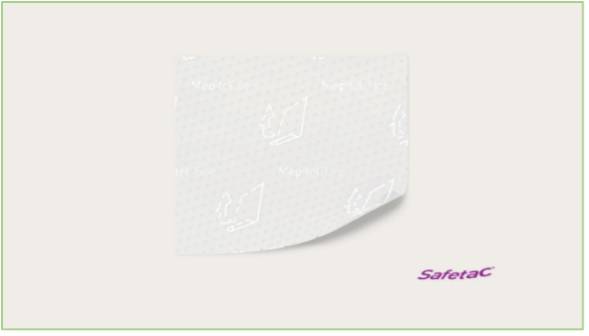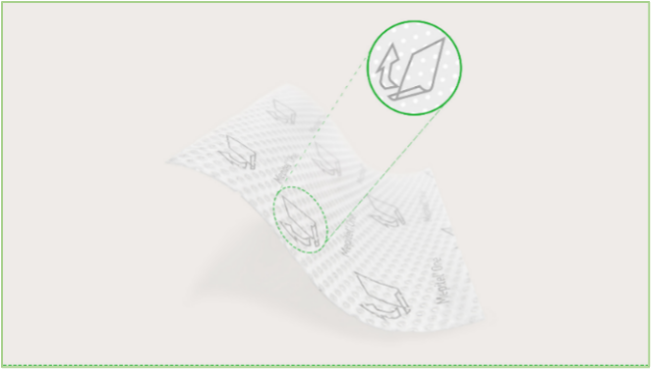References
Adamietz IA, Mose S, Haberl A, et al (1994) Effect of Self-Adhesive, Silicone-Coated Polyamide Net Dressing on Irradiated Human Skin. Radiat Oncol Investig 2(6): 277-282
Brown A (2014) Strategies to reduce or eliminate wound pain. Nurs Times Online 110(15): 12-15
Collin O (2009) Use of Mepitel One dressing following hand surgery: a case study series. Poster presentation. Wounds UK Conference, United Kingdom
David F, Wurtz JL, Breton N, et al (2018) A randomised, controlled, non-inferiority trial comparing the performance of a soft silicone-coated wound contact layer (Mepitel One) with a lipidocolloid wound contact layer (UrgoTul) in the treatment of acute wounds. Int Wound J 15: 159-169
Edwards J, Mason S (2013) Hand burn management: minimizing pain and trauma at dressing change. Br J Nurs 2(20): S46-S50
Gee Kee EL, Kimble RM, Cuttle L, Khan A, Stockton KA (2015) Randomized controlled trial of three burns dressings for partial thickness burns in children. Burns 41(5): 946-955
Gotschall CS, Morrison MI, Eichelberger M (1998) Prospective, randomized study of the efficacy of Mepitel on children with partial-thickness scalds. J Burn Care and Rehabil 19(4): 279-283
Mudge E, Orsted H (2010) Wound infection and pain management made easy. Wounds Int 1(3): 1-6
Patton ML, Mullins R, Smith D, Korentager R (2013) An open, prospective, randomized pilot investigation evaluating pain with the use of a soft silicone wound contact layer vs bridal veil and staples on split thickness skin grafts as a primary dressing. J Burn Care Res 34(6): 674-681
Waring M, Bielfeldt S, Mätzold K, Wilhelm KP, Butcher M (2011) An evaluation of the skin stripping of wound dressing adhesives. J Wound Care 20(9): 412-422
White R (2005) Evidence for atraumatic soft silicone wound dressing use. Wounds UK 1(3): 104-109
White R (2008) A multinational survey of the assessment of pain when removing dressings. Wounds UK 4(1): 14-22
Zillmer R, Ågren MS, Gottrup F, Karlsmark T (2006) Biophysical effects of repetitive removal of adhesive dressings on peri-ulcer skin. J Wound Care 15(5): 187-191
Brown A (2014) Strategies to reduce or eliminate wound pain. Nurs Times Online 110(15): 12-15
Collin O (2009) Use of Mepitel One dressing following hand surgery: a case study series. Poster presentation. Wounds UK Conference, United Kingdom
David F, Wurtz JL, Breton N, et al (2018) A randomised, controlled, non-inferiority trial comparing the performance of a soft silicone-coated wound contact layer (Mepitel One) with a lipidocolloid wound contact layer (UrgoTul) in the treatment of acute wounds. Int Wound J 15: 159-169
Edwards J, Mason S (2013) Hand burn management: minimizing pain and trauma at dressing change. Br J Nurs 2(20): S46-S50
Gee Kee EL, Kimble RM, Cuttle L, Khan A, Stockton KA (2015) Randomized controlled trial of three burns dressings for partial thickness burns in children. Burns 41(5): 946-955
Gotschall CS, Morrison MI, Eichelberger M (1998) Prospective, randomized study of the efficacy of Mepitel on children with partial-thickness scalds. J Burn Care and Rehabil 19(4): 279-283
Mudge E, Orsted H (2010) Wound infection and pain management made easy. Wounds Int 1(3): 1-6
Patton ML, Mullins R, Smith D, Korentager R (2013) An open, prospective, randomized pilot investigation evaluating pain with the use of a soft silicone wound contact layer vs bridal veil and staples on split thickness skin grafts as a primary dressing. J Burn Care Res 34(6): 674-681
Waring M, Bielfeldt S, Mätzold K, Wilhelm KP, Butcher M (2011) An evaluation of the skin stripping of wound dressing adhesives. J Wound Care 20(9): 412-422
White R (2005) Evidence for atraumatic soft silicone wound dressing use. Wounds UK 1(3): 104-109
White R (2008) A multinational survey of the assessment of pain when removing dressings. Wounds UK 4(1): 14-22
Zillmer R, Ågren MS, Gottrup F, Karlsmark T (2006) Biophysical effects of repetitive removal of adhesive dressings on peri-ulcer skin. J Wound Care 15(5): 187-191



 Figure 1. Mepitel® One with Safetac® technology
Figure 1. Mepitel® One with Safetac® technology